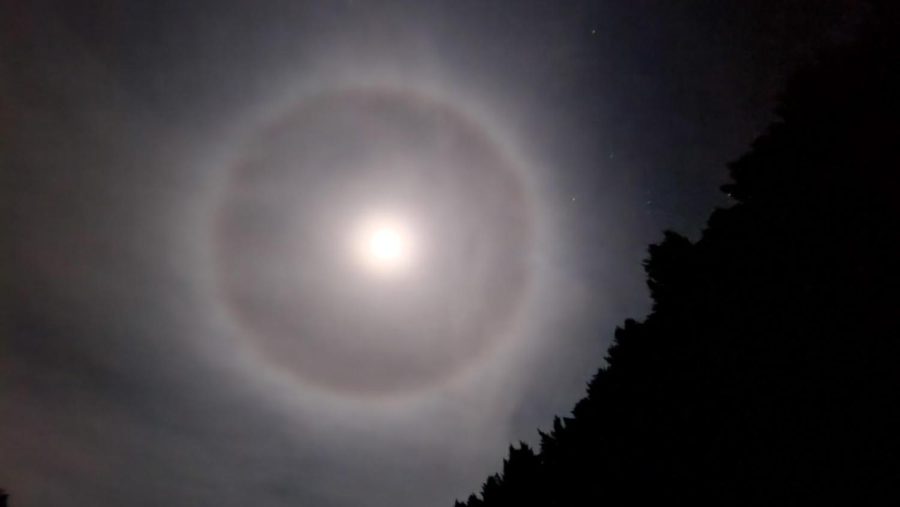Wintery Mix or Wintery Myth?: Using fact and fiction to predict the winter
A lunar halo, a common sign of cold weather, appeared in the sky over Clemmons on Jan. 6, 2023.
January 30, 2023
Now that it’s the middle of winter, this is the time of year where many students hope for snow. Yet, there are some myths about winter that many people still believe. Here are some superstitions about winter that are not fully accurate, and their more scientific counterparts to prepare you for any type of weather that winter throws your way.
August Weather (Myth): There’s a piece of folklore that says that the type of weather you get in wintertime depends on how the weather unfolds in the month of August. The saying goes, “For every day of fog in August, there will be snowfall. If the first week of August is unusually warm, the coming winter will be snowy and long. If a cold August follows a hot July, it foretells a winter hard and dry.” In Clemmons, the weather was fairly normal for August, being slightly cooler overall than July, but definitely not what you would consider “cold” for August, so the myth probably wouldn’t apply. Of course, there’s no scientific evidence to actually back this up, but it remains a well-known and believed folktale.
Lunar or Solar Halos (Fact): While, the saying “A halo ‘round the sun or moon means ‘twill rain or snow soon,” started out as just an old wives’ tale, there has since been scientific evidence to back this up. These halos are caused by tiny particles of ice suspended in the air that the sunlight or moonlight is refracting off of at a very specific angle. This is often a sign that some sort of winter precipitation is on its way, because of the moisture heavy sky.
Thicker Tree Bark (Myth): It’s a long used and well-known tale that if there is thicker tree bark on the northern side of the tree than the southern side, it foretells a cold winter. This, however, is illogical, since bark is usually about the same thickness all the way around and it would be impossible to tell if the wood was thicker anyway without cutting the tree down.
Lowered Barometric Pressure (Fact): If you check your weather app, one of the statistics that may be shown is the barometric pressure of your given location. This may not be a number anyone typically pays much attention to, but it is interesting and accurate when trying to predict when snow will come. Barometric pressure is the pressure exerted on the Earth by the atmosphere, and it often drops significantly when it snows or when snow is coming. This is because when it’s colder, the air is less dense, which leads the force exerted by the atmosphere to lessen. This idea is the same for any type of precipitation, but if low barometric pressure is combined with temperatures between 28 and 35 degrees Fahrenheit, there’s a good likelihood that snow is on the way.
Height of Garden Weeds (Myth): It has long been said for farmers and other types of planters that how tall the weeds in their garden or near their crops grow is how much snow the upcoming winter will bring. There has been no scientific evidence to prove this theory however, and weeds tend to just generally grow however large they can before they’re removed.
Starry Skies and Bright Sunsets (Fact): While most may believe that the most beautiful sunsets and clearest night skies happen in the summertime, that’s actually not true. The best sunsets and starriest skies are proven to be in the winter time. The heat from summer weather more readily produces smog and other pollutants that can block or obscure the sky, making these beautiful views less visible. If you see an extra vibrant sunset or a particularly star filled sky, chances are that there is cold weather either already here or on the way soon.
Whether you choose to believe the folklore or the facts, it’s always fun to try and predict upcoming winter weather.






